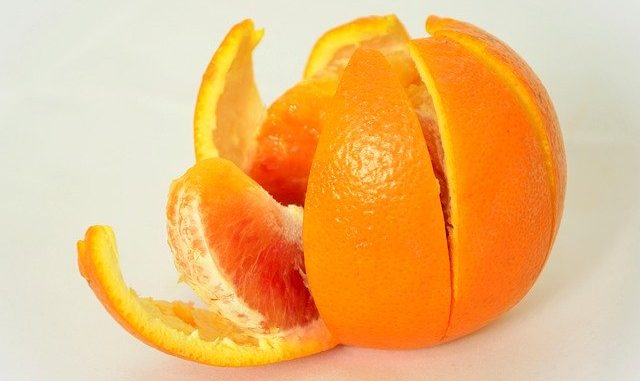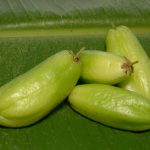
The polymethoxyflavones (PMFs) are an interesting group of dietary bioactive compounds which appear to have some useful health benefits. They are found mainly in citrus peel and are often classed as citrus bioflavonoids. A derivative of nobiletin is found in large amounts for a citrus fruit called shiikuwasha. At the moment they have been seen to have particular anticarcinogenic properties in a number of model systems dealing with cancer. They also appear to have some useful broader spectrum properties. At the moment researchers are still trying to elucidate the mechanism of their action.
The PMFs have been found to prevent colon tumour formation in mice which have been treated with the carcinogen azoxymethane (Lai et al., 2011). One study examined the effects of of three major 5‐hydroxy PMFs, namely: 5‐hydroxy‐6,7,8,3′,4′‐pentamethoxyflavone, 5‐hydroxy‐3,6,7,8,3′,4′‐hexamethoxyflavone, and 5‐hydroxy‐6,7,8,4′‐tetramethoxyflavone, on human colon cancer HCT116 and HT29 cells. (Qui et al., 2010). These effects were compared with those produced of their permethoxylated counterparts, namely: nobiletin, 3,5,6,7,8,3′,4′‐heptamethoxylflavone, and tangeretin. The 5‐Hydroxy PMFs showed much stronger inhibitory effects on the growth of the colon cancer cells in comparison with their permethoxylated counterparts. This article suggested a pivotal role of hydroxyl group at the 5‐position in the enhanced inhibitory activity by 5‐hydroxy PMFs.
The compound, 3′,4’‐didemethylnobiletin (DDMN) which is one of the major metabolites of nobiletin in mice and also the most potent metabolite. It is reported to be present at a much higher concentration in mouse colonic mucosa than nobiletin. Recent findings suggest many of the observed positive effects of nobiletin could be attributed to its metabolite DDMN (Zheng et al., 2015). DDMN has mush more powerful antiinflammatory, antioxidant and anticarcinogenic properties than its substrate nobiletin (Lai et al., 2008; Lo et al., 2010; Su et al., 2012).
References
, , , , , , … (2011). Chemoprevention of colonic tumorigenesis by dietary hydroxylated polymethoxyflavones in azoxymethane‐treated mice. Molecular Nutrition & Food Research, 55(2), pp. 278–290 (Article)
, , , , , , … (2010). Inhibitory effects of 5‐hydroxy polymethoxyflavones on colon cancer cells. Molecular Nutrition & Food Research, 54(Suppl 2), S244–252. (Article)
, , , , , , … (2015). Analysis of 10 metabolites of polymethoxyflavones with high sensitivity by electrochemical detection in high‐performance liquid chromatography. Journal of Agricultural and Food Chemistry, 63(2), pp. 509–516. (Article)

Leave a Reply